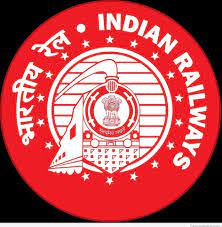Bhubaneswar: Finding delay in response from Railways during Balasore train tragedy, the Commission of Railway Safety (CRS) recommended the Railway Board to review the system if disaster-response in the Zonal Railways.
In its inquiry report on the triple train accident that killed 293 people and injured more than 1000 persons, the CRS also asked the Railway Board to strengthen the coordination between Zonal Railways and various disaster-response agencies like State Disaster Response Force (SDRF) and NRDF.
AM Chowdhary, Commissioner of Railway Safety, South Eastern Circle, has conducted the inquiry. Apart from CRS, CBI is also investigating the mishap.
Notably, the Bahanaga locals had first responded to the massive accident on June 2 evening, then, it was the Odisha Government, which immediately swung to action and carried out a massive rescue and relief operation overnight. NDRF also joined in the operation. However, there was much delay from the railway side.
The machinery and big cranes were required to carry out rescue operations during such disasters. But, due to highly equipped ODRAF teams, the victims were rescued from the ill-fated coaches, sources said.
When the cranes and other equipment reached the accident spot, at that time, the rescue operation was almost over. In this mishap the Odisha Government has saved more than 1200 precious lives.
So, the CSR did not forget to mention about the delay and lack of coordination from the Railway point of view during the biggest train accident in the past three decades.
In its report, the Commissioner said the accident was a case of rear-collision of 12841 Shalimar-Chennai Coromandel Express with the goods train standing on the up loop line of the station. The last two coaches of train no. 12864 SMVT Bengaluru-Howrah Express, which were passing on the down main line of the station, were hit by the derailed coaches of train no. 12841, and overturned.
Additionally, the speedometer reading of the Coromandel Express, dropping from 128 kmph to zero abruptly, can only indicate that the train did not derail before it hit the goods train. In fact, it is proof that the train travelled on the loop line and hit the goods train at that speed. “A derailment before the collision would result in a reduction of speed”.
The rear collision was due to the lapses in the signalling-circuit alteration carried out at the North Signal Goomty in the past, and during the execution of the signaling work related to the replacement of the ‘electric lifting barrier’ for level-crossing gate no.94 at the station, it said.
These lapses resulted in wrong signalling to train no.12841, due to which the up home signal indicated green for run-through movement of the train on the up main line of the station.
But the crossover connecting the up main line to the up loopline (crossover 17 A/B) was set to the up loopline. The wrong signalling resulted in 12841 traversing on the up loop line and eventual rear collision with the goods train standing there.
According to the report, the circuit shifting work that was done on account of cable fault back in 2018. This shifting was allegedly done without following the standard practice and there was wrong lettering on the terminals.
The report also mentions a similar incident of mismatch between the intended route set by signals and the actual route taken by a train on May 16, 2022 at Bankranayabaz BKNM station in the Kharagpur Division due to wrong wiring and cable fault. Had corrective measures been taken after that incident to address the wrong-wiring, the accident at Bahanaga Bazar railway station could have been averted, the report said.
Hence, the report concluded that the cause of the accident was not due to “any defect of track or rolling stock (coaches, engine, etc.).”
The CRS report has also mentioned the non-supply of circuit diagram for ELB replacement work, which is the responsibility of the accident has been placed on the Signal and Telecommunication Department.
It has been categorically mentioned that lapses at multiple levels in the department were responsible for the accident. It has also been mentioned that had the Station Master told the S&T staff about the strange behaviour of the Crossover 17A/B, they could have found the problem in the wiring that connects to the electronic logic of the crossover. This could have averted the accident.


